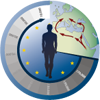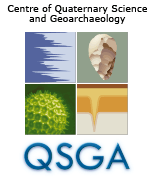Temporal Foci, Spatial Foci and Methodology
Research within the proposed programme will concentrate on six temporal foci and on four spatial foci. These foci are addressed by projects, clustered in groups (A-F and Z), of which clusters A-D are related to specific geographical regions while clusters E and F follow supra-regional approaches (Figure 2).
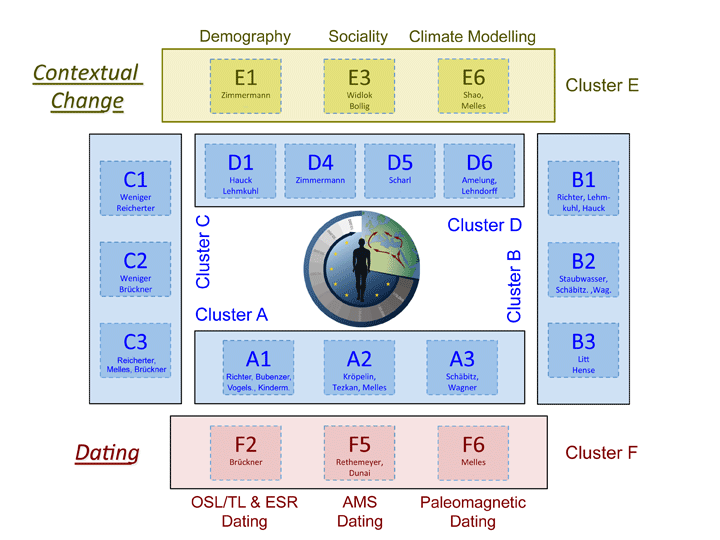 |
| Figure 2: Organisation concept of the applied CRC. The project clusters A-D conform to the main geographical regions (horizontal), while thematic fields are arranged vertically and indicated by colours. Clusters E and F deal with integrative and methodological aspects, respectively. In order to achieve maximum flexibility, three "merged projects" have been designed which combine larger, multidisciplinary research groups. |
Spatial concept of the CRC
Data collection and fieldwork will concentrate on four geographical regions in selected key areas of modern human origin, dispersal and establishment (Figure 3):
- Northeast Africa: The “source” area of the emergence of Modern Humans
- Near East, Anatolia and the Balkans: Eastern corridor of dispersal into Europe
- Northwest Africa and Iberian Peninsula: Possible western Corridor of dispersal into Europe
- Central Europe: Case study of a “sink” area of transcontinental population movements, resettlement and establishment processes
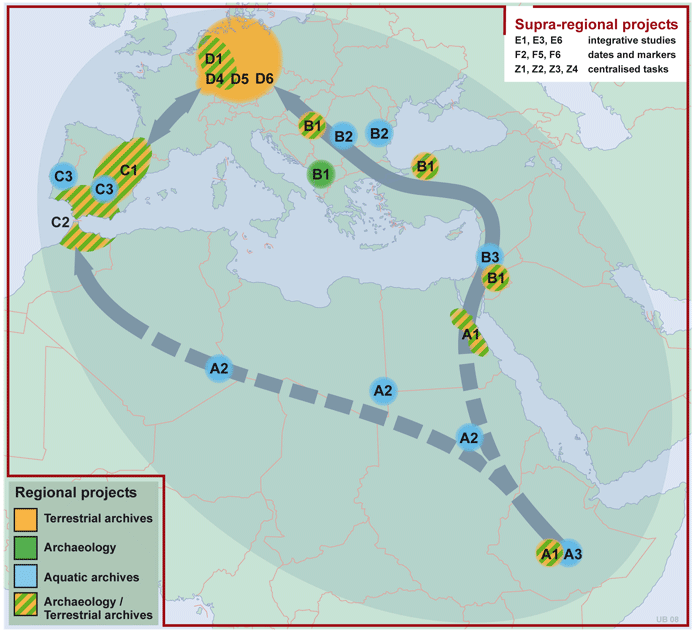 Figure 3: Geographical regions of the first and second phase of the CRC. Only the projects of the clusters A-D are related to specific fieldwork areas, while the E / F projects follow an integrative approach and are displayed in the upper right corner only. Figure 3: Geographical regions of the first and second phase of the CRC. Only the projects of the clusters A-D are related to specific fieldwork areas, while the E / F projects follow an integrative approach and are displayed in the upper right corner only. |
Time scale concept of the CRC
We defined a set of criteria to select six chronological foci to be implemented, which
-
display major temporal changes in socio-cultural systems or possible abrupt changes within the social system and
-
facilitate diachronic comparisons and
- allow for observation of population dynamics.
Our research will focus on six chronological stages, each representing a principal episode in prehistoric population dynamics (Figure 4):
- 190,000 a - 60,000 a (MIS 7/6 to 4): Emergence of Modern Man in East Africa and first dispersal into the Near East. Partial depopulation of Central Europe by the first glacial maximum of the last glacial (70,000 – 60,000 a).
- 60,000 a - 18,000 a (MIS 3/2): Resettlement of Central Europe after the first glacial maximum, immigration of Modern Man into Europe and replacement or extinction of Neanderthals, “Upper Palaeolithic Revolution”. Partial depopulation of Central Europe by the second glacial maximum (28,000 –18,000 a).
- 18,000 a - 9,600 a BC (MIS 2/1): Resettlement of Central Europe after the second glacial maximum.
- 9,600 a - 3,500 a BC: Dispersal of farming and husbandry and possible initial migrations from the Near East to Central Europe.
- 3,500 a -1,600 a BC: Farming in the "Dark Ages" in western central Europe. The mobility of later times caused either by natural or cultural factors has to be compared with earlier processes of expansion.
- Comparison with developed farming systems of later times in western central Europe.
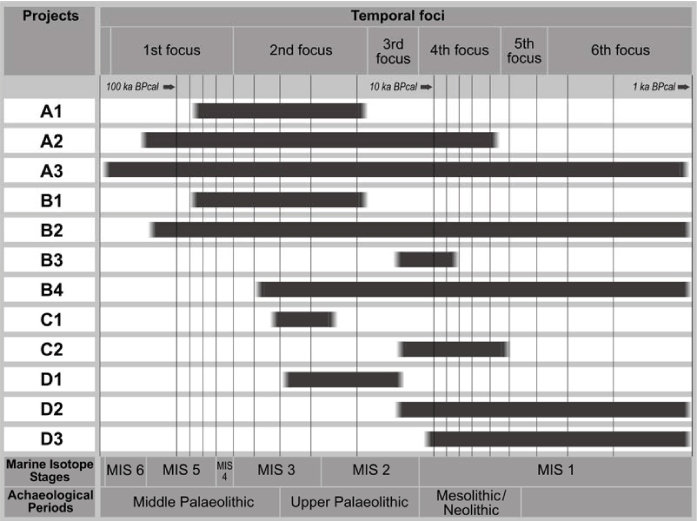 Figure 4: Chronological stages of the CRC (first project phase) and time scales of the projects (only project clusters A-D displayed). Figure 4: Chronological stages of the CRC (first project phase) and time scales of the projects (only project clusters A-D displayed). |
Methodology
A research strategy of three connected scale levels will help to interpret data within the key areas and comparison of regional data. A macro-scale perspective concerns structures and relationships within systems (climate, environment and culture) causing systemic change and diffusional processes. From this perspective, sources, trajectories and sinks of diffusional processes are reconstructed and observed on a supra-regional scale. A meso-scale perspective deals with limnic, terrestrial and archaeological archives and is designed to reconstruct regional climate and environment by observation of high resolution sediments and by cultural chronology. A micro-scale perspective centres on local site catchments. Excavations of archaeological sites, stratigraphical analysis, geoarchaeological prospection and sampling, detection of land use proxies will deliver data on local environmental parameters and their impact on human behaviour. Up- and downscaling procedures allow for connection of the different scale levels and require a particular methodology, which was developed in previous collaborative projects (e.g. RhineLUCIFS) conducted by CRC scholars in Cologne and Bonn.
